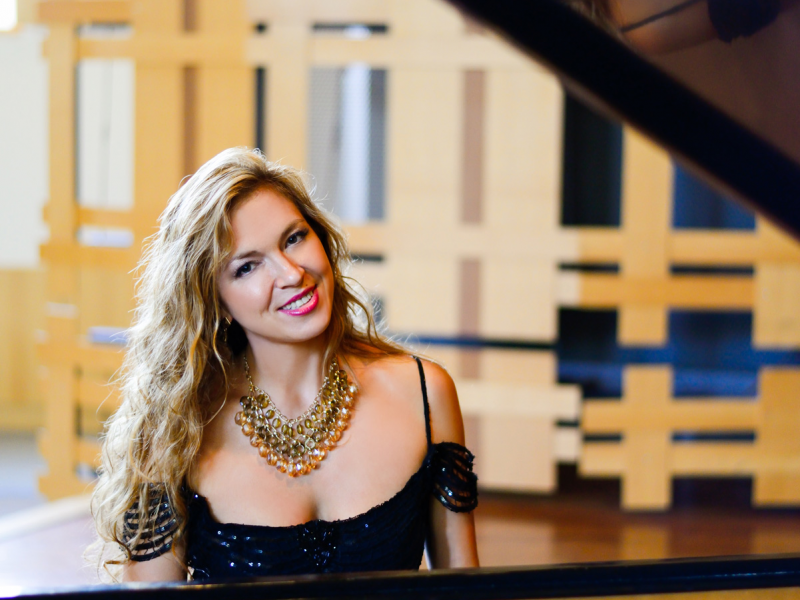
By Dennis D. Rooney
It was 85 degrees on Feb. 19 when I arrived at the FAU campus and entered the Student Union that houses Kaye Auditorium, a detail meaningful only on account of the first work on the ambitious program of the South Florida Symphony that I was there to hear: A suite from Rimsky-Korsakov’s opera Snegourochka (The Snow Maiden). An odd juxtaposition in South Florida, I thought.
It was my first hearing of this orchestra, which celebrates its 19th season, having been founded as the Key West Symphony Orchestra by its music director, Sebrina María Alfonso. It was also my first visit to FAU’s Kaye Auditorium, whose almost 2,400 seats put it on a par with Carnegie Hall in New York, except for the acoustics, which I found curiously variable, particularly with respect to placement on stage. As the audience filed in, Ian Fraser offered congenial program annotations that included many entertaining asides, all delivered in a pleasant British accent.
I do not know whether the orchestra had rehearsed on stage, but from the opening measure of the Rimsky-Korsakov suite, it did not sound as if they had. (My comments apply to this concert. There were three later ones elsewhere, and the performance quality doubtless improved on repetition.) Attacks were often tentative, and the playing lacked sufficient expressive impetus, as if the players were walking on eggshells. Such a careful, rather phlegmatic performance extended even to the final “Dance of the Tumblers.” It wasn’t nearly rowdy or propulsive enough.
The piano had been set on stage before the program began, so there was no loss of time before Svetlana Smolina, a tall, brilliant blonde wearing a Chinese-red gown, made her entrance for the Piano Concerto No. 2 (in C minor, Op. 18) by Sergei Rachmaninov. Fraser’s spoken program notes mentioned that the work testified to its composer’s recovery from the clinical depression that befell him after the failure of his First Symphony, and was dedicated by the grateful Rachmaninov to Dr. Nikolai Dahl, whose hypnotherapeutic treatment had effected his patient’s recovery.
Smolina clearly knew the score thoroughly and negotiated her part expertly, but she gave no hint of any discernible expressive impulse. Her tone tended at times toward excessive brilliance and she often was guilty of overpedalling, but she always knew where she was, hitting every mark exactly, whereas Alfonso often cued the orchestra behind the beat, with the unhappy result that many exact synchronizations between solo and orchestra stuttered. Balances and phrasing in the orchestra once again suggested insufficient rehearsal.
After intermission, we were treated to more program annotations, this time from the conductor. The Fifth Symphony of Carl Nielsen is a work that Alfonso clearly loves and she certainly displayed her advocacy in both her prefatory remarks and the performance that followed. Although she was unlucky in her choice of horns, who were always more uncertain in their playing than not, the orchestra played in a way that suggested more rehearsal time has been devoted to this work on the program in particular.
Nielsen is one of the 20th-century’s greatest composers, whose time should have come a long time ago, but never seems to. The Fifth Symphony is one of those life-changing works that you never forget hearing for the first time. In my case, it was Leonard Bernstein and the New York Philharmonic in 1962, but if the South Florida Symphony did not quite rise to that level, it made the work live.
The disruptive snare drum in the first movement made its effect most strongly in the rather dry stage acoustic and the exuberant life affirmation embodied in the finale achieved its full effect, so that many who heard it at this concert for the first time will remember it vividly.